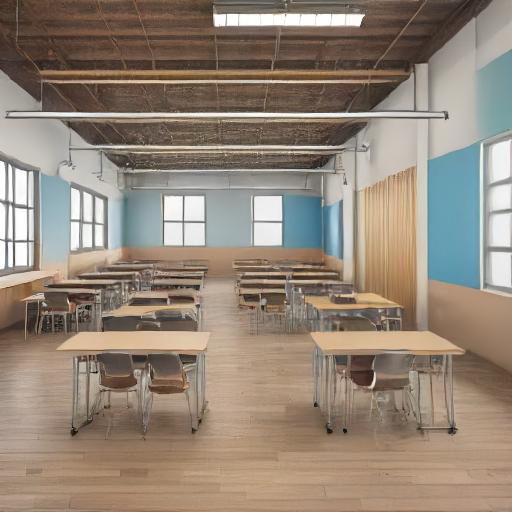
Chronic absenteeism is one of the leading causes of recent plummets in school performance in the U.S. According to the U.S. Department of education, students who miss 15 or more days per school year are considered chronically absent and therefore have an increased risk of falling behind. In 2023, 27.85% of students were chronically absent which is a large leap from the 16% average in 2019. Because of this, we have seen negative effects, not only in the students, but the staff as well.
One reason for this increase is thought to be the outbreak of COVID-19 which, according to the American enterprise institute, was initially the main factor. During the 2021-22 school year, chronic absentee rates grew to 28% and in the years since then, the rates have not returned to a normal level nearly as quickly as expected.
While COVID did lead to a massive disturbance in attendance, the trend continues due to other factors as many students who were chronically absent during the pandemic continued to be absent once it subsided.
Some of the effects on students, as researched by the Department of Education, are loss of social skills, lower success rates, and increased probability of dropping out. While it can seem inconsequential for younger children who are not receiving high-level teachings, chronic absenteeism in kindergarteners has 75% more severe outcomes as it interrupts development and creates a pattern of missing school in later years.
Here at Sentinel, we face the challenge of chronic absenteeism as well. Mr. Nelson, the band director at Sentinel, says that absent students pose an especially serious problem for him as many students view band as an easy class to skip and he “has to re-teach everything” when students miss class. With over 200 students to teach, Nelson is constantly busy and this is exacerbated by the need to help absent students.
This raises the problem of accountability. How does the school keep students from skipping classes?
Unfortunately, there is no simple solution. Mr. Dixon, another teacher at Sentinel, elaborates that, “it is difficult for teachers to help students get caught back up when they have been gone” and it requires that the teachers put in more time. He does, however, identify reasons for absences that are often overlooked or generalized.
Students have a variety of reasons to be gone such as family, mental health, and many other external factors in one’s life. These factors cannot be ignored when addressing this issue. Sometimes students are absent for their well being or for personal reasons which they are then chastised for by the school.
When interviewed, an anonymous Sentinel student who is chronically absent said that they are often absent for medical reasons along with struggling with mental illness. Because of this, they find school overwhelming and sometimes unfriendly.
When asked about the school’s reaction to their absence they elaborated that it feels like, “teachers basically say it’s on [them] and that [they] need to do a better job of handling those things” with the reasoning that in the real world, students have to fulfill their obligations even if they “don’t feel like it”.
Another Sentinel student mentioned that she is a chronic absentee, not “because [she] doesn’t care about school, as much as [she] struggles in school and need[s] support to be a better student.” This is a shared sentiment of students worldwide and has been gaining traction and recognition in the legal world.
According to the legislative tracker, in 2024 there have been 59 new bills proposed to address chronic absenteeism that range in complexity. Most of these proposed programs identifying absent students and attempt to address the root causes of individual absenteeism. These include various support systems for students struggling with mental health or financial issues.
These new implementations would replace current disciplinary actions such as suspension and detention which are proven to be ineffective as they lead to a positive feedback loop of absences.
Unfortunately, we have not seen a statewide bill that would enact such programs further than those that are federally required in Montana. Montana addresses truancy by contacting parents and through possible fines and community service; however, as the rest of the nation moves towards alternative methods, it is likely that we will as well.
One implementation at Sentinel was the start time change. It was altered so that school would start at 8:55 instead of 7:55 with the hopes that students would have more time to sleep and not feel the need to skip the first part of the day. This was done following studies that showed that teenagers who sleep in have higher levels of productivity. This, however, did not work as absence rates did not lower, prompting the district to change the first-period start time to 8:30 for the 2025 school year.
The new start time could have a variety of effects on the student body. A Sentinel student who commonly slept through first period last year but has been arriving on time this school year, stated that the earlier start will not alter how much school he misses as he will just need to adapt his sleep schedule.
Another student says that with the earlier time, he will likely end up skipping his morning classes. Similarly, jazz band students have expressed concern that if jazz continues to be held before school they will need to wake up unimaginably early in order to attend Jazz Gold which begins before zero period.
The start time is not a perfect solution and will not be able to alter attendance on its own, but Sentinel has and will continue to try a multitude of methods for ensuring student attendance as it is critical to the school’s function and overall well-being. Absences in schools are natural in moderation and sometimes required for students to reset and rest, however, excessive absenteeism is being addressed nationwide and will remain on the radar of administrations.



